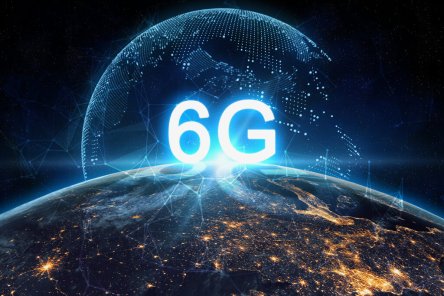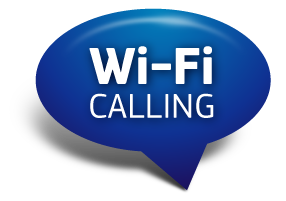5G, the next generation mobile network, launched in 2020, following in the footsteps of a steady progression of voice capability, call and text encryption, data transmission, video calling, mobile internet. 1G started it all in 1981, 2G came 11 years later, and 3G and 4G made their entries in 2001 and 2012, respectively. 5G figures to impact everything from entertainment and healthcare to farming and robotic factory workers, meeting an ever-growing need for high data rates for virtual, augmented and mixed reality. So is 6G the inevitable next step in this evolution? On one hand, 5G, which promises significantly faster data rates, higher connection density and lower latency, among other things, hasn’t even been fully deployed. But “in the next 10 years, we can expect massive changes and new technologies coming into our lives which will require more and more connectivity at higher speeds as we transfer more and more data,” says Dr. Shaghik Atakaramians, a senior lecturer at the University of New South Wales Sydney’s School of Electrical Engineering and Telecommunications. She continues, “We can imagine completely autonomous systems; or multi-sensory extended reality which integrates the five traditional human senses with the digital world; or real-time remote telesurgery; or complete virtual shopping malls.” ‘Always on a 6G path’ That means, New York City-based technology information consultant Lifewire says, that “technology always pushes forward and standards take a long time to mature, so we’ve always been on a path to a 6G world. We’ve managed to go from 1G to 5G in such a relatively short amount of time, so 6G is just the natural progression towards faster and better wireless connectivity.” Once developed, 6G most likely will involve using ultrahigh frequencies (millimeter waves) of the radio spectrum. It might eventually approach the upper limits...
Multifamily Ties
Real Estate's Connected Age
We’re living in a connected age. In multifamily property management, creating strategic connections can enhance the resident experience and deepen ties with communities and property managers. How? An article in the Harvard Business Review titled “The Age of Continuous Connection” explains how technology is driving meaningful customer experiences. “Thanks to new technologies that enable frequent, low-friction, customized digital interactions, companies today are building much deeper ties with customers than ever before,” wrote authors Nicolaj Siggelkow and Christian Terwiesch. “Instead of waiting for customers to come to them, firms are addressing customers’ needs the moment they arise — and sometimes even earlier. It’s a win-win: Through what we call connected strategies, customers get a dramatically improved experience, and companies boost operational efficiencies. For multifamily operators, that means creating effective digital connections that anticipate needs and feel personalized. As a result, businesses will be able to free up onsite property staff for more meaningful in-person interactions. Connected businesses At the Yardi Advanced Solutions Conference (YASC) that took place in Washington, D.C., in May 2019, Anant Yardi spoke to clients about continuous connection and how it can be beneficial for real estate business relationships. “This day and age of continuous connection doesn’t necessarily mean we are communicating all the time. But it does mean that we are available, and we respond,” said Mr. Yardi. “Our goal is to provide a connection between the business, the consumer and the property. As we think about continuous communication, the basic way we do real estate doesn’t change. But the way we transact business may change,” he added. For Yardi, this means thinking about the user experience of all parties involved, from stakeholders and leasing staff to prospects and residents. How can we innovate the way people connect with their homes and management...
Keep Connected
National Assisted Living Week 2016
With its 2016 theme, Keep Connected, the National Center for Assisted Living hopes to shine a sotlight how technology can enhance the lives of senior citizens. According to a 2014 Pew report, almost 3/4th of American seniors own a cell phone, and more than half are online. In fact, though older adults are typically late adopters, Pew discovered that once seniors join the online world, “digital technology often becomes an integral part of their daily lives.” In recognition of the effect technology can have on the lives of older citizens, the National Center for Assisted Living (NCAL) announced the theme for National Assisted Living Week 2016 will be “Keep Connected.” Organizers hope the event, taking place September 11-17, will highlight how technology can improve the senior experience. “With this year’s theme, we hope to help overcome the mistaken belief that seniors are not interested in or able to learn about the latest modern advancements,” explains NCAL Executive Director Scott Tittle. “At the same time, we want to recognize the many revolutionary ways staff are enhancing care through new innovative tools and broadening their connections with the larger community.” For older adults transitioning into senior living, the physical distance from friends and family can be daunting. The disappearance of day-to-day contact with loved ones can leave retirees feeling isolated and alone, but that doesn’t have to be the norm. As programs like Sienna Senior Living’s Cyber Seniors prove, with a little coaching seniors can learn to use the latest apps and devices without difficulty. Laptops, phones and tablets empower older adults, helping to strengthen personal relationships and connect with us with the outside world. For senior living businesses using the Yardi Senior Living Suite™, the value of a connected community is evident. From the beginning,...
Cosmos Browser
Browse the Web with SMS
In urban North America, we likely take it for granted that LTE and 3G services will be available for our communication convenience. But in some parts of the U.S. and the world, where fast, ubiquitous networks aren’t available, effortless wireless Internet connectivity is simply a dream. Such cities or rural areas might be in for a surprise from Cosmos, a new browser that’s currently in the works. This concept sounds pretty crazy – a way to surf the web using SMS text messages. The project is still under development, but should the idea work, its implications could be huge. The Cosmos Browser is an Android web browser that uses SMS text messages to retrieve the web content displayed in a stripped-down layout. Its creators describe how it works: “After a person inputs a URL, our app texts our Twilio number which forwards the URL as a POST request to our Node.JS backend. The backend takes the URL, gets the HTML source of the website, minifies it, gets rid of the css, JavaScript, and images, GZIP compresses it, encodes it in Base64, and sends the data as a series of SMSs. The phone receives this stream at a rate of 3 messages per second, orders them, decompresses them, and displays the content.” In other words, once the message reaches the Cosmos backend, the page is retrieved and stripped down to bare elements. Afterwards, these are sent to the user as text messages, enabling to be read with just SMS access. The compression and decompression of the messages is done by the Cosmos browser to reduce the amount of data that needs to be transmitted. Once the page is fully loaded, the SMSs are deleted, and your inbox is uncluttered. The team behind the project is...
Wi-Fi Calling
Gaining traction
Wi-Fi Calling has never been a priority for carriers with good cellular service. However, following the recent announcement that iPhones will support Wi-Fi Calling through iOS8, and that T-Mobile is already on board, the rest of the carriers have somewhat been forced to rethink their plans for this service. The terminology might be confusing, what does Wi-Fi Calling mean exactly? This nifty sounding technology uses your home Wi-Fi to make calls and send texts over the internet. It allows cellular packets from your phone to be transferred to your carrier over the internet, and reintroduces them into the cellular network, much like beaming over the air. It differs from Google Hangouts and Skype – these let you talk to other people by using call forwarding or some internet-based interface – Wi-Fi Calling allows you to use your actual carrier phone number over the internet. It differs from VoIP technology which lets you use an internet-connected phone just as you’d use a landline, transferring your voice over the internet to the switched telephone network – the Wi-Fi Calling technology drops the cell towers path, connecting your voice to your mobile carrier’s network using the internet. One of the advantages of this system is that it can help you conserve plan minutes and texts, as the calls that are made over Wi-Fi don’t count against your plan. Moreover, it enables you to make calls using your phone number even when your network cuts out or when you’re outside your coverage area. Wi-Fi Calling is not a new idea – smaller providers like Republic Wireless have been offering the service for quite some time – but Apple’s announcement may be forcing everyone by emphasizing the technology and launching it before the rest are ready to go. At...
Beacons
Always-On Connectivity
If your property was developed before 2000, it wasn’t built with cellphone and Wi-Fi reception in mind. The location, building materials, and sometimes the building’s design can hinder signals. Today’s renters won’t tolerate glacial-speed connectivity and inconsistent service. Beacons could help improve resident satisfaction, retention, and give you new ways to communicate with tenants. Beacons are the latest technology for any property that wants to improve cellphone reception and Wi-Fi availability. The small devices can be plugged into a wall or set on any surface. Their low-energy usage and low-cost makes them easy to add to any unit. Beacons use Bluetooth connection to send signals to devices such as smartphones and tablets, so there are no wires or tedious setup required. Basically, beacons can be used to amplify your wireless services. Offering them with your units could be a huge selling point for renters, particularly Millennial. There is a growing trend of Americans and Canadians who are ditching cable in exchange for Netflix, Hulu, and other streaming video services; some switch to save hundreds of dollars on their bills each year. Residents won’t be pleased if they feel coerced into a cable contract because they can’t stream shows at home. Tenants of all ages will appreciate faster speeds and more consistent service. It’s vital to their life’s work, in many cases. An increasing number of professionals work from home at least one day a week or more. Even those who aren’t remote employees are expected to have always-on connectivity, staying on top of their game by working evenings and weekends. If the internet is down or slow, their work will suffer and they’re likely to look elsewhere when it’s time to renew the lease. Owners may also toy with the idea of using beacons...





